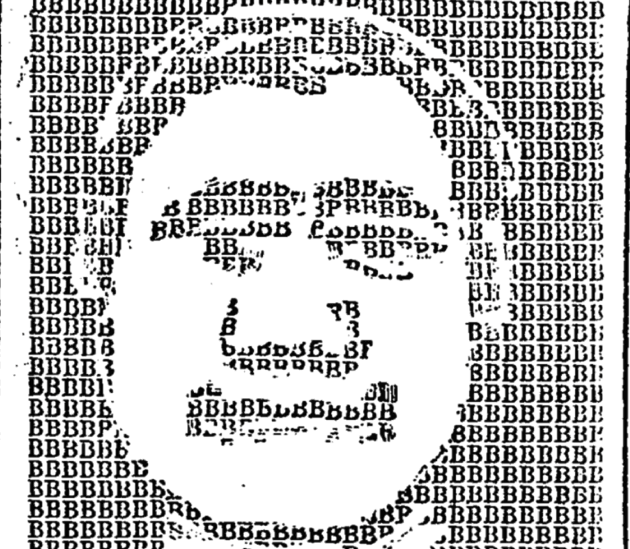This Guy Wanted to Sell You Some Furniture,Mere Sapno Ki Rani (2023) Hindi Web Series and Other News
On the Shelf

An 1881 ad for the Brooklyn Furniture Company.
- After he published the Tractatus, Wittgenstein traded philosophy for gardening, and developed a fixation on home design that may have led him back into philosophy’s embrace: “To details like the door-handles, in particular, Wittgenstein accorded what [the biographer Ray] Monk calls ‘an almost fanatical exactitude,’ driving locksmiths and engineers to tears as they sought to meet his seemingly impossible standards … Monk argues, more than once, that this design project brought Wittgenstein ‘back’ to philosophy … But I doubt that the return to philosophy was prompted by social connections, which were always a mixed bag for the antisocial Wittgenstein. I prefer to believe that the prompt was in the handle. For when Wittgenstein returned to philosophy, the idea that drove him beyond all others was that the nature of language had been misunderstood by philosophers … Words did not, he had come to believe, primarily provide a pictureof life (the word “snake” representing, or sounding like, an actual snake); they were better conceived of as a part of the activity of life. As such, they were more like tools.”
- Jacob Harris was scoping out some nineteenth-century newspaper ads (don’t judge; this is how some of us get our kicks) when he stumbled upon an ad for the Brooklyn Furniture Company composed entirely of typography—a direct predecessor of the ASCII art that would come more than a century later. “The face resembles modern ASCII art, but it was published at a time—March 20, 1881—that seemed impossibly early,” he writes: “In many newspapers, these early examples of text art vanished not long after they arrived … Apart from the two advertisements I had found, the style apparently never caught on in the Times. But why not? To answer that, I looked more at the Eaglewhere I found the earliest ads—and where they survived for several decades longer than everywhere else. They are there in 1881, when one bold advertiser filled an entire page with ASCII text. They are there in 1888, when the Eagle advertised its election night almanac in the familiar large letters. They are there all the way up to July 3, 1892, a day the same Brooklyn Furniture Company again ran a half-page ad with their address in large ASCII letters. And, then, on July 5th, they were completely gone, replaced by modern layouts and fancy typography. Those upgrades likely explain, at least in part, what happened. ASCII art flourishes most when technology is limited; you don’t need Print Shop anymore when you can do digital layout on your computer and have an inkjet printer.”
- “The gift and curse of American hyperbole, truthful and otherwise, has lately been distilled in a single omnipresent word. In 2016, everything is ‘everything.’ That’s what the Internet is telling us, at least. Or yelling at us, in capital letters, with blaring hashtags attached. ‘@Beyonce’s #MetGala dress is EVERYTHING,’ Selfmagazine proclaimed recently on Twitter … Internet one-upsmanship is a definitively 21st-century art form, but ‘everything’ carries a hint of yesteryear—a whiff of the hot air that once swirled through medicine-show tents and carnival grounds … The Internet has a way of placing all of us—you, me, the online peddler of counterfeit Viagra, the editor of The Paris Review—in the undignified position of those touts who haunt the sidewalks outside bad restaurants in tourist-trap neighborhoods, thrusting menus in the faces of passers-by.”
- In which Edward Docx attends the 2016 British Esperanto Conference: “There are few times in your life that you can be certain that you are doing what nobody else in the world is doing—or has ever done—or will likely do again. This was one of them. I was sitting at a table of six, with a Catalan, a Brazilian, a Belgian, a Londoner and a Slovakian, while they munched and guzzled their way through their kareosand had what I can only describe as the most kinetic, exciting and involving conversation in Esperanto that Spice City (of Stanley Street, Liverpool) is ever going to witness. The animation. The jokes. The asides. The soliloquys. The antanaclasis. Oh, if only I had known what they were talking about I could have … I could have told you. But I was converted. The whole idea and application of Esperanto was so obviously amazing, so demonstrably persuasive, so self-evidently practical that I forget all over again about English; English; English.”
- The Internet is a fine place to find good writing. But it’s the best place to find moronic writing—just try. It’s such an effective moronic-writing delivery system that print media got jealous: “There are too many people filling every possible orifice of the Internet with their idiot opinions and comical prejudices and poorly constructed arguments … But: Have you seen what’s not on the Internet? You would think, what with the supposed influence of those who man the precincts offline, away from the free-for-all of our type-and-post world, that there would be safety in the smooth, heavy paper and creamy finish of print … And yet: THEY ARE NOT ALL THAT MUCH BETTER … It turns out most people don’t have anything very interesting to say and they’re actually a lot worse at saying it than we previously anticipated. Also, what no one expected is that shit flows upward, splattering the finer precincts we once looked to for wisdom with the same awful patina of chatty, ‘relatable’ garbage whose ultimate goal is to be passed around without anyone mentioning how gross your palms feel once you hand it off. We were warned and we didn’t listen and now we’re all paying the price.”


